On This Day…May 11th.
Only in England...part one. In one of the more unusual ‘OTD...’ entries, two London firemen practice evacuation of animals in London Zoo in the event of being bombed; May 11th, 1940.
The Battle of Attu was the only land battle fought in North America during World War II. The actual reasons behind the invasion of the Alaskan islands were never made explicit, but it’s likely one role was to divert the U.S. Pacific Fleet’s attention in the build up to the Japanese attack on Midway Island.
It’s also possible the Japanese believed that holding the islands would prevent the U.S. (or the Soviets, for that matter) from attempting to invade Japan’s home islands by way of the Aleutians.
The three week battle ended when most of the Japanese invaders, with no hope of reinforcement or rescue, made a final ‘banzai’ charge and were killed in brutal hand-to-hand combat. In what is often no more than a footnote in WW II history, 549 soldiers of the 7th Division were killed and more than 1,200 injured. The Japanese lost over 2,351 men with only 28 prisoners taken.
In the early hours of May 11th, 1941, an He111 bomber flew on a ‘pirat’ mission (rogue, ‘lone wolf’ sorties to cause maximum damage on specific targets) over western England.
Unable to find his target (aluminium sheet manufacturing works), 27-year-old pilot Oblt Johann Speck von Sternberg made a crucial error in circling low and slow over the area several times, giving the AA forces below time to “get their eye in” and target the Heinkel.
After several successful ground hits, Sternberg was shot (by rifle, which shows the low altitude) in the head and the plane caught fire and exploded, plunging to the ground. Three of the crew died and only Rudolf Budde, who, with amazing clarity for a 21 year old under such stress, deployed his blazing parachute after being blown from the doomed bomber.
Budde, thrown clear, miraculously landed alive, although with severe burns and broken bones. As he lay in a wooded hollow, however, he saw several women running toward him with sharp tools such as scissors, shears, and pitchforks. He is on record as thinking, “I am going to end my life being torn apart by English women”.
The ladies...had other ideas, and rather than seeking some vengeful violence upon the young German, they wanted his parachute. Such was the effect of rationing and shortages, the women began tearing his ‘chute apart for the silk in order to make underwear.
Irene Smith, one of the enterprising ladies present that night, kept a souvenir (below). Her daughter explained...
“All the ladies in the village who wanted some silk got some,” said Mrs Thorp, “but others would not touch it because it was German.
“Mother did make some underwear out of her cut but she also got a piece that had some German printing on. It was unusable but she decided to keep it. I have had it for about 20 years and have washed and ironed it,and now keep it in a plastic cover in my wardrobe. It is about 5ft long and triangular in shape.”
Only in England...
An utterly beautiful shot of B2M, A2N, and Ki-4 aircraft aboard the Japanese carrier Kaga, on the 11th of May 1937.
Below, nothing to do with today, is the ‘Akagi’ in 1934.
B-26 Marauder with the 73rd Bomb Squadron armed with a Mark XIII aerial torpedo (below) at Fort Randall Army Airfield, Cold Bay, Alaska, 11th of May 1943.
Carrier USS Bunker Hill (CV-17) burning after enduring her second Kamikaze attack in succession off Okinawa, Japan, 11 May 1945.
On the morning of 11 May 1945, while supporting the Okinawa invasion, Bunker Hill severely damaged by these two kamikazes. First, a A6M Zero flew in from low cloud, dived toward the flight deck and dropped a 500 lb bomb, which went through the vessel and exploded in the sea. The Zero then deliberately crashed onto the flight deck, destroying parked planes full of fuel, causing the huge fire seen in the photo above (note the incredible calmness of some of those sailors).
The remains of the Zero were pushed over the deck and dropped into the sea. Then, all of 30 seconds later, a second Zero, piloted by Ensign Kiyoshi Ogawa (below) plunged into a his suicide dive. The Zero dodged the AA curtain, dropped his bomb, and crashed into the flight deck near the control tower.
The ship suffered the loss of 346 men killed, 43 missing, and 264 wounded. Although badly crippled, Bunker Hill managed to return to Bremerton via Pearl Harbor under her own steam.
Not sure how many people are aware the venerable Spitfire was based on a ‘gull wing’ design. Drawing on his experience with the Schneider Trophy winning ‘S.6B seaplane’ - R.J. Mitchell's design specs were for a ‘narrow, streamlined fuselage monoplane with open cockpit and to be powered by a 600hp engine’. The resulting aircraft was unofficially christened Spitfire by Sir Robert McLean (head of the Vickers company and whose daughter - nickname ‘Spitfire’ - the aircraft is named for).
Mitchell was never really happy with the Type 224 and before it was ready for testing he was back at the drawing board working on improvements. Official testing of all the F.7/30 entries took place at Martlesham Heath in early 1934 and neither the Supermarine Type 224, or any of the other submissions were accepted and the contract was awarded for a Gloster Gladiator biplane (with amended specifications).
In the the beginning of 1936, the prototype Type 300, bearing the serial number K5054 (below) was ready for its first test flight. Once again Sir Robert insisted it should be called the ‘Spitfire’, a name that did not meet with general approval at Supermarine. Mitchell is on record as saying, "Bloody silly to call it by the same name as a previous failure".
The rest, as they say, is history...
USS Ticonderoga underway, 11 May 1964. A good year.
The circle turns...Belgian refugees flow along the roads as the Wehrmacht starts its crushing roll across the west of Europe. May 11th, 1940.
...and the 11th Infantry surrendering in Cologne, May 11th, 1945.
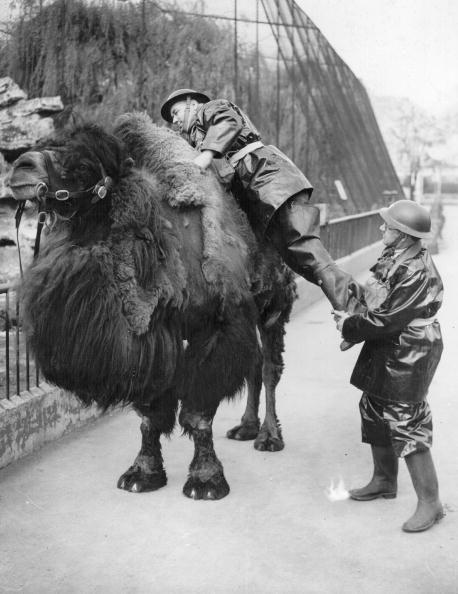


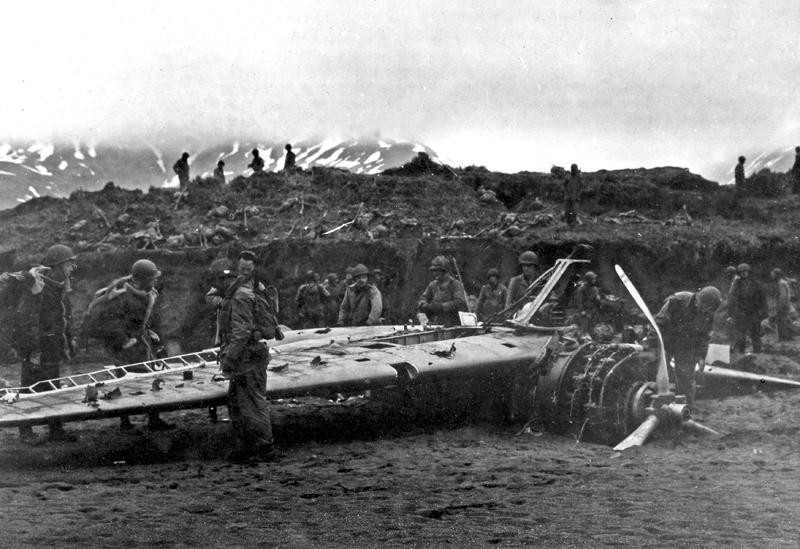
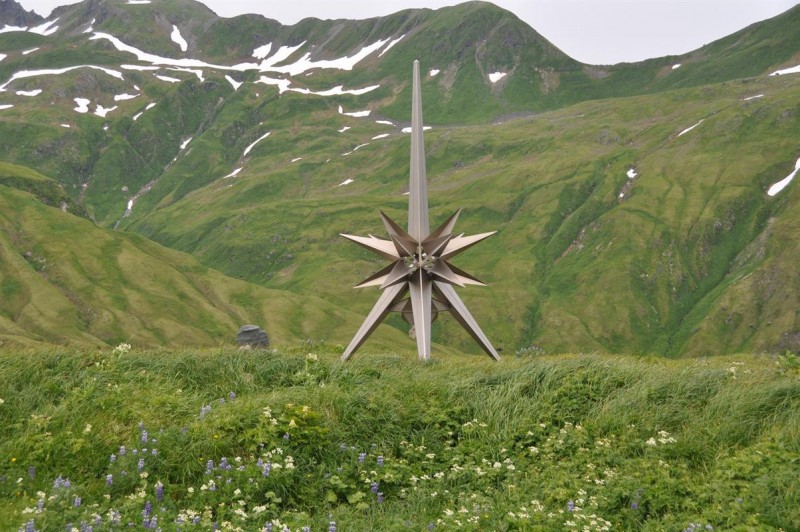

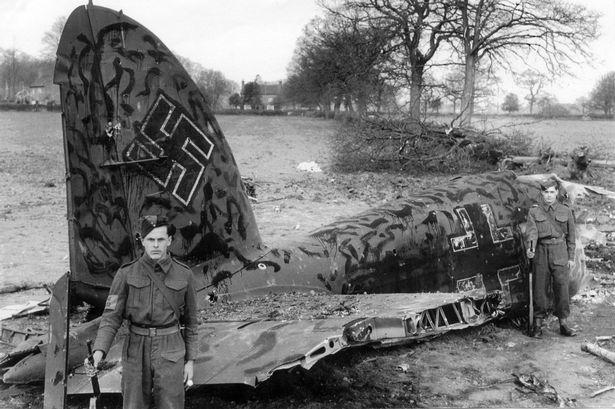



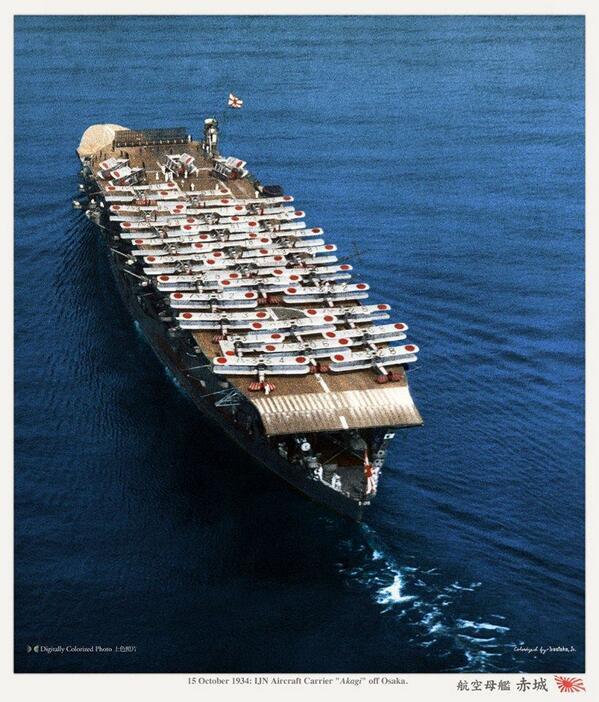
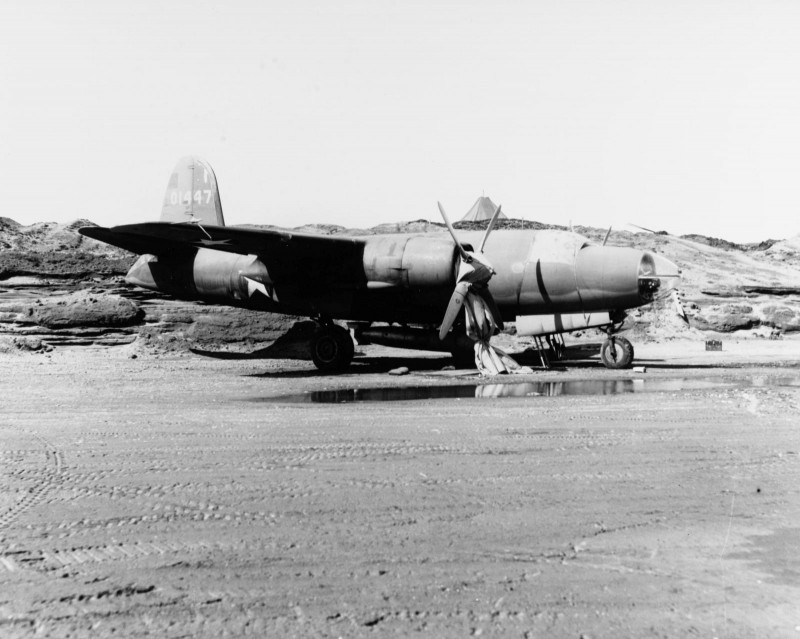

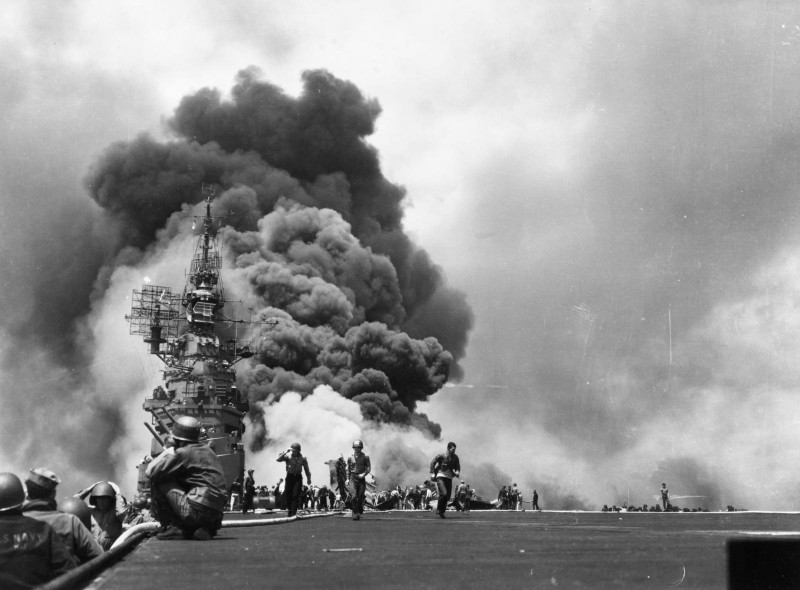
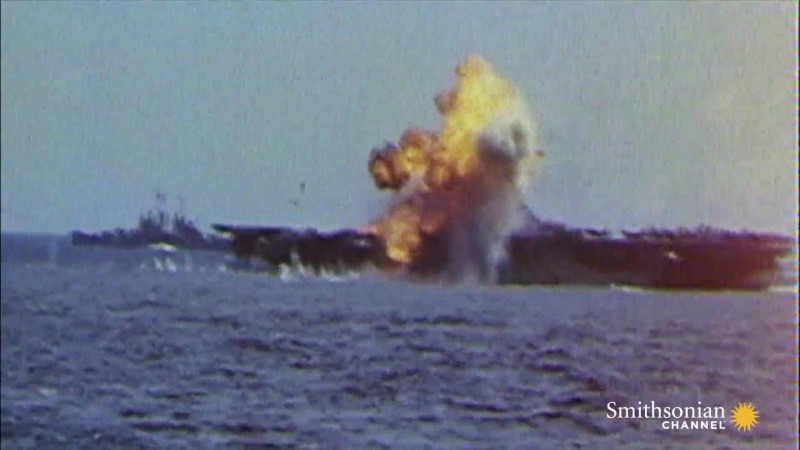

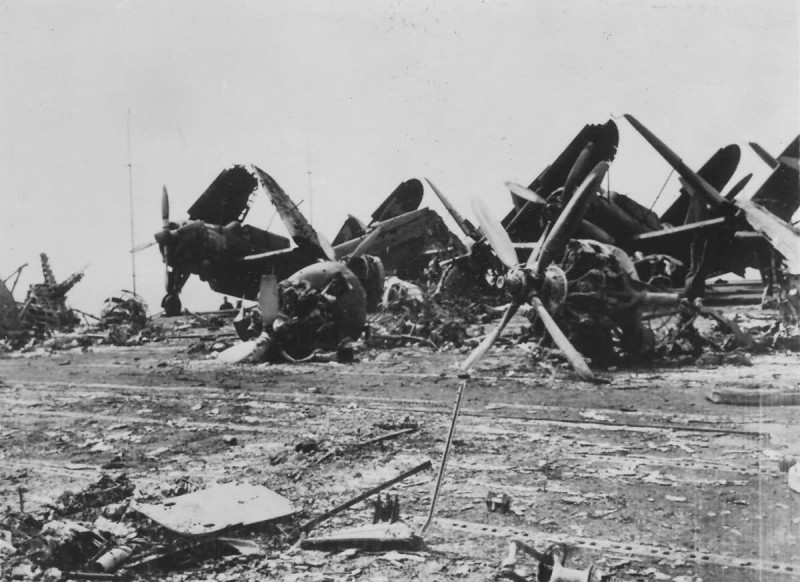

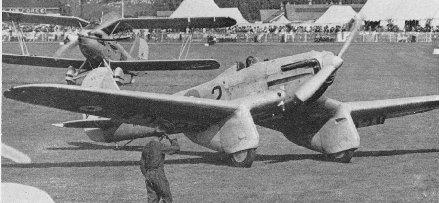

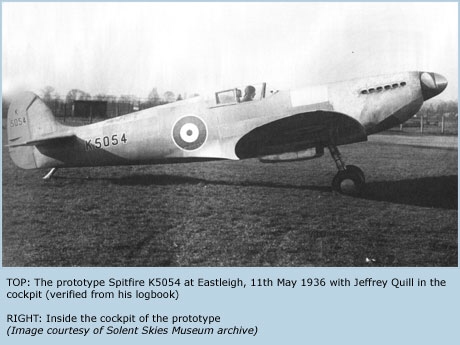

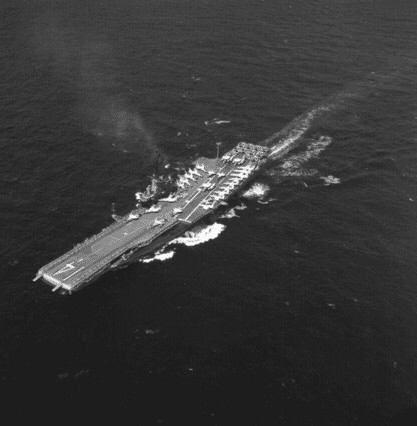


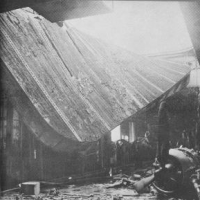
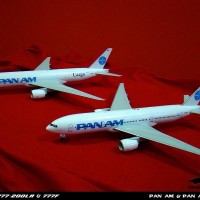
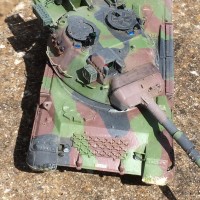
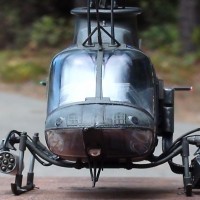
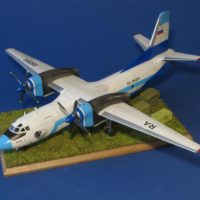
One of the benefits of the Aleutian campaign and some interesting Dio Bait:
https://en.wikipedia.org/wiki/Akutan_Zero
James, that is 100% dio bait. Thanks.
your on the jazz today david...dad shelled kiska and attu in that campaign...when midway happened naval intel was just sure yamamoto would be directing the battle from the aleutians so the idaho was sent there again to track him down [the "I" had just left Coral Sea] ...of course Yam was with the main battle fleet...oh and i think your spitfire is sexy
Thanks, Bob Mack. You, my friend, are an ‘OTD...’ star - thanks for the contributions. Always, always welcome.
Always a treat visiting "On This Day"!
What's so darn good about 1964? Some personal connection, perhaps David?
Great as usual!
The second kamikaze strike on Bunker Hill took out the aviator's ready rooms, just beneath the flight deck. Nearly all of VF-84's pilots died. When the fire was out and they went into the spaces, nearly all had died of smoke inhalation trying to get through the hatch. When the Essex carriers were rebuilt after the war in the 34-Charlie modification program, all ready rooms were relocated beneath the hangar deck, the hangar being the armored deck in the ship.
Some lessons come at a very high cost...
Anyone interested in the Aleutian Islands campaign during WWII should read the book "The Thousand Mile War" by Brian Garfield. It is amazing to me that anyone could have fought a war under those conditions with little to no support, worn out equipment and almost no intelligence information. A forsaken theatre that should not be forgotten...
As a side note, many of the cold and extreme weather procedures, clothing and materials used by the US military today were researched and developed by frontline units assigned to Alaska during WWII.
I think the phrase, “history is written by the victors” is appropriate to mull over in the case of the Aleutians battle. One of the reasons our species is so bad at learning from history is that we try so hard to ignore, change, spin the parts that don’t fit with our preferred narrative.
It sometimes takes at least a generation or two to get to the truth. One of the truly great things about the internet (and there’s plenty bad - like how the world has become totally reliant on it) is the opening up of information for everyone.
The Aleutian campaign, original 'forgotten war'. Nice pics of Japanese carriers in early years.
Hmmmm, I don't know if that He-111 would win any model contests with that camo paint job. Makes you think. Great job as always, David. Sure do appreciate the time and effort. Keeping it fun.
Reality vs. airbrush.
Thanks, Gary. As always.
David, I have to say you are turning me into a real CV addict.
The Kamikaze shots are chilling - and yes incredible calm from those Sailors...
On a different note, what is it with you and Camels?
On the downed German flier, C.S. Lewis in his Screwtape Letters has a great riff, describing how (to the devil, anyway) the English tend to be very disappointing when it comes to real vice: they loudly proclaim that hanging is too good for the Germans, but are the first to offer tea and cigarettes to the first downed German pilot who shows up at the back door. For this, Screwtape dubs them "deplorable milksops."
As you say, David, only in England.